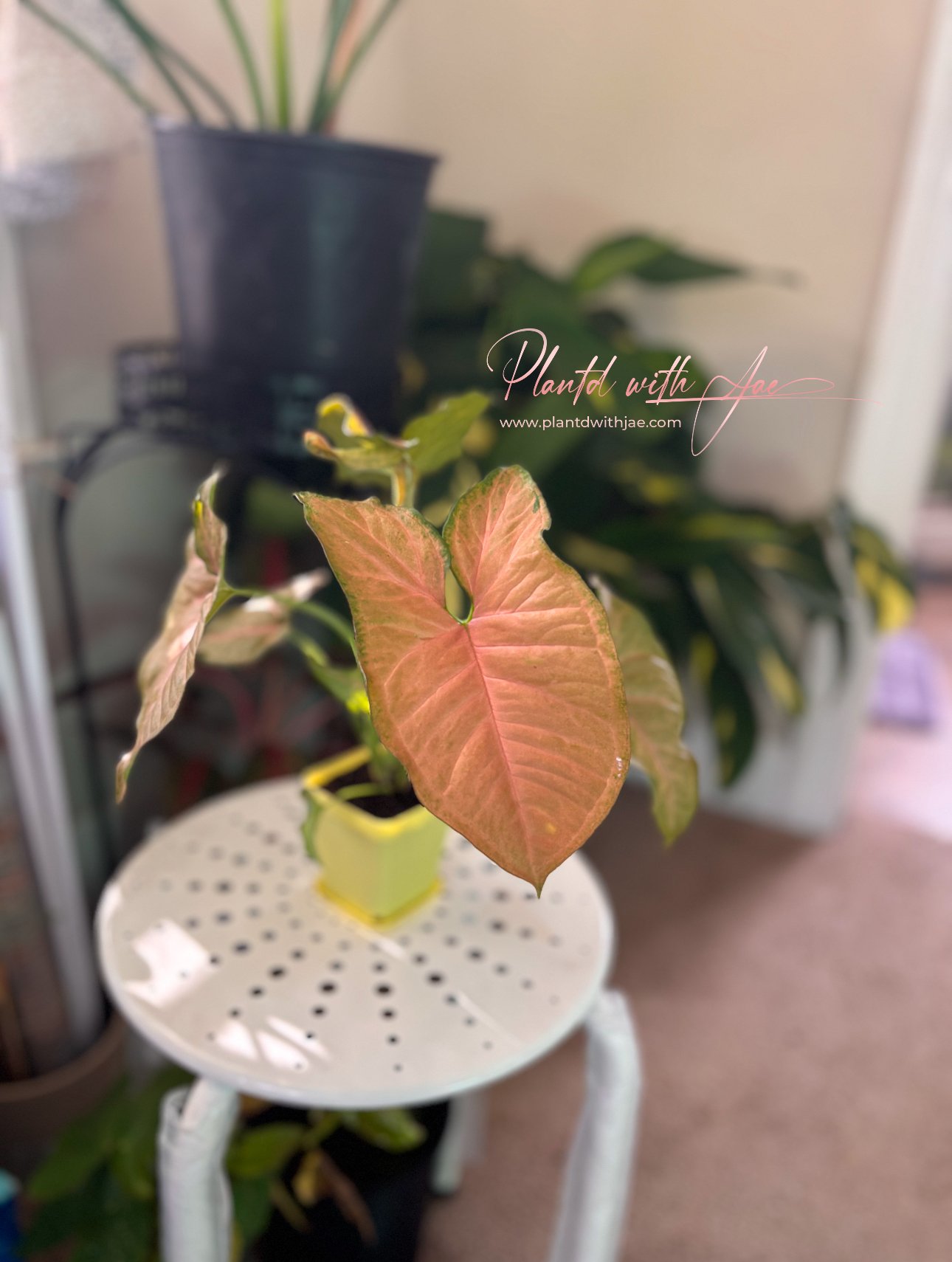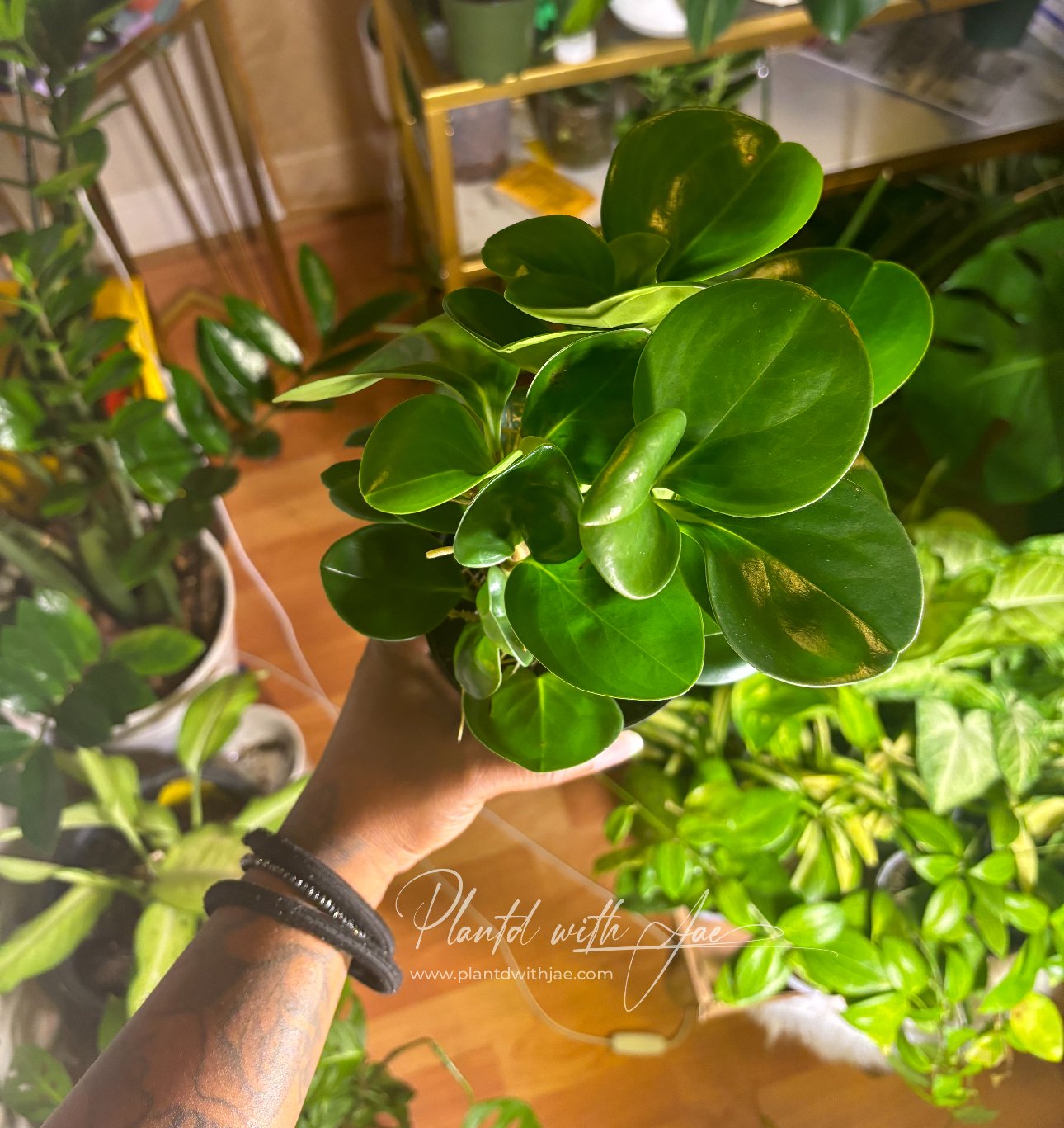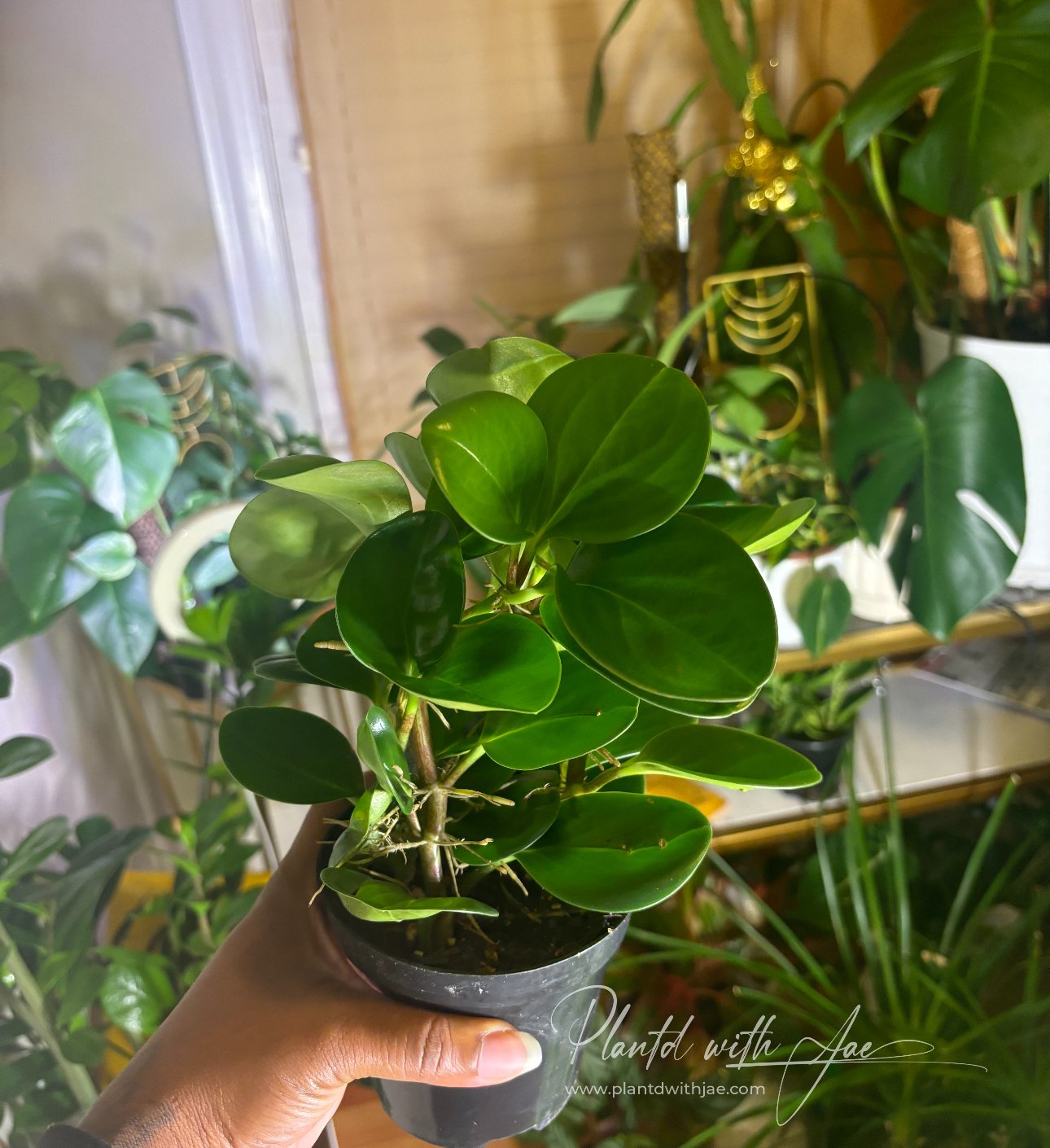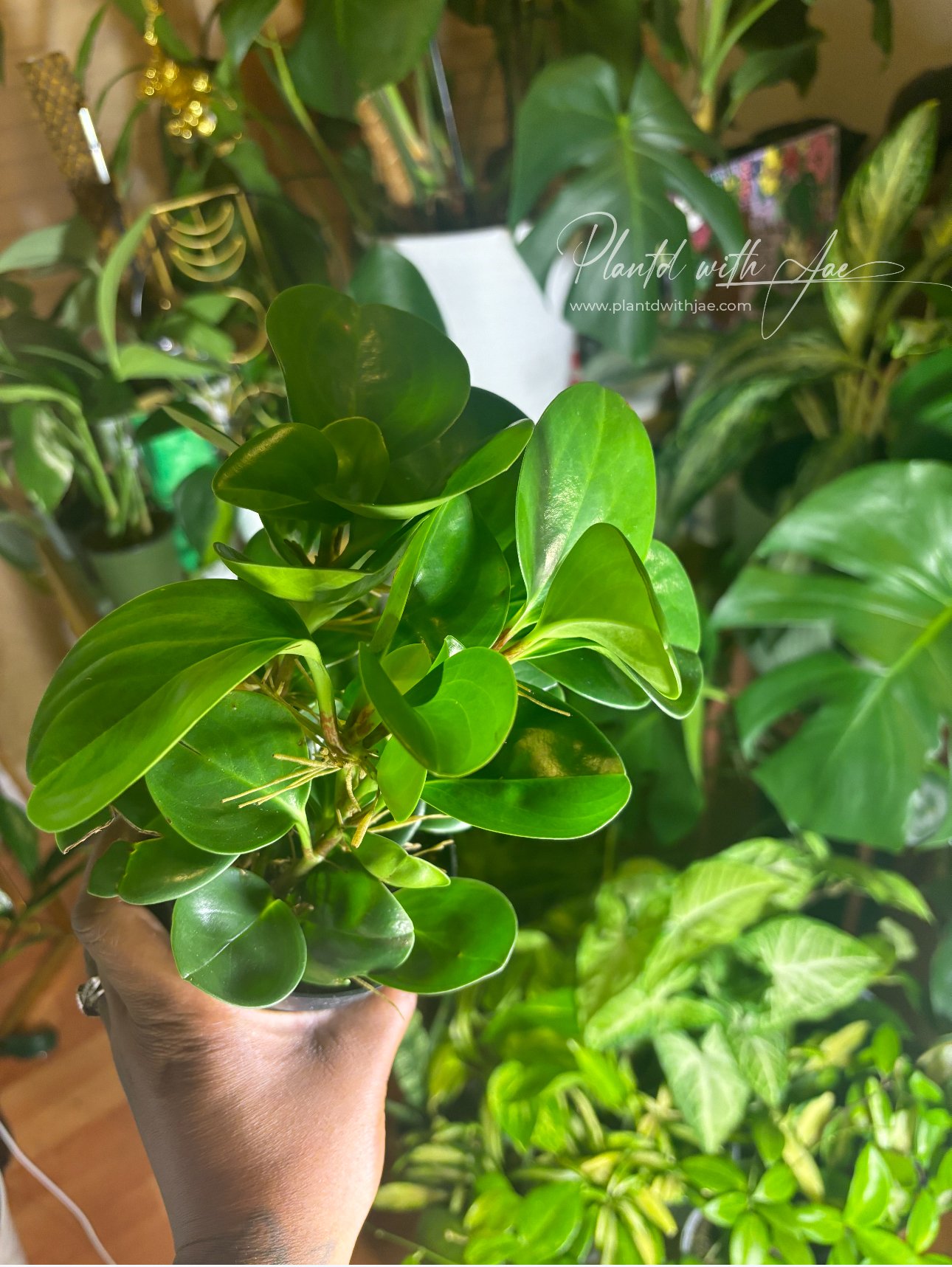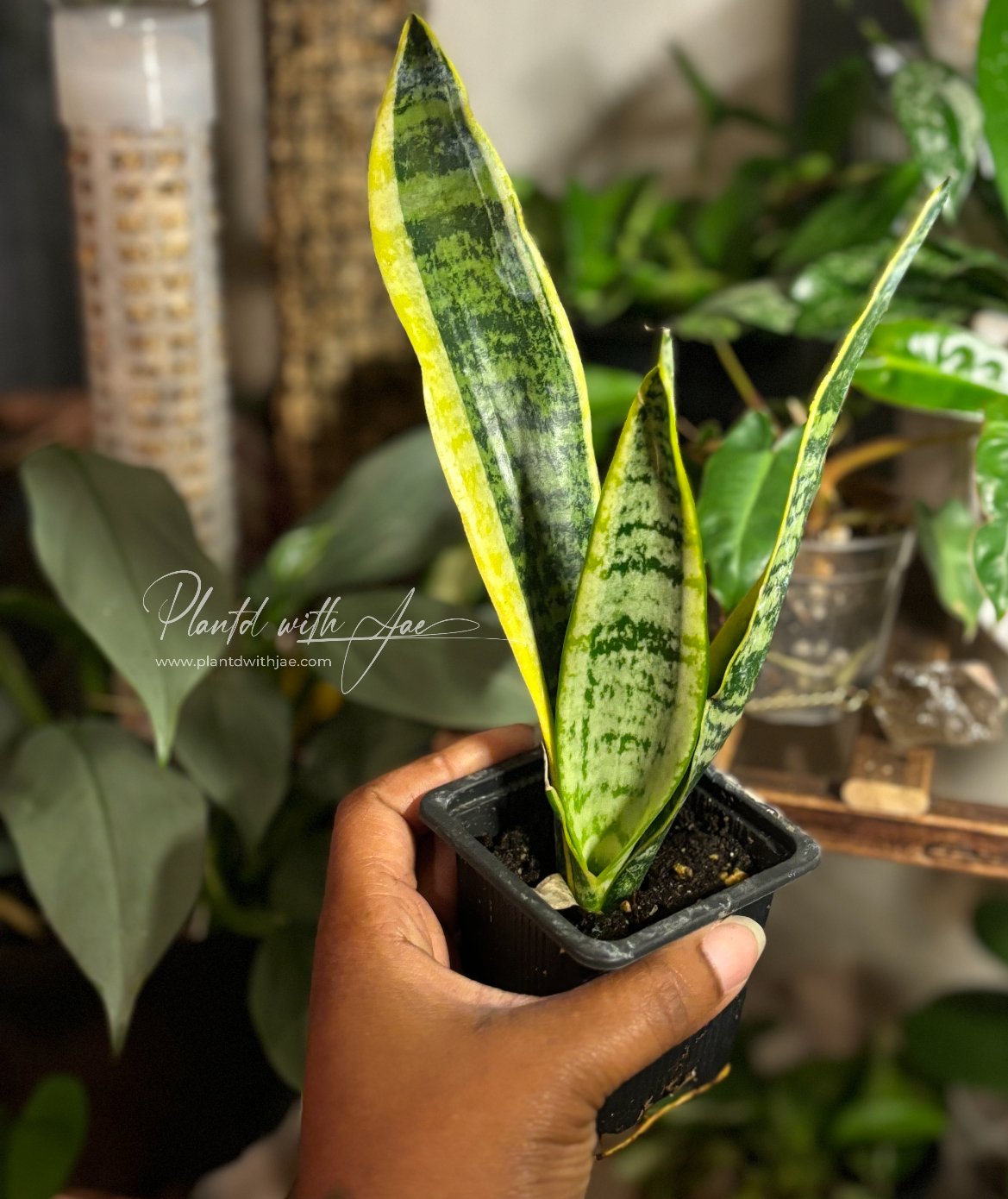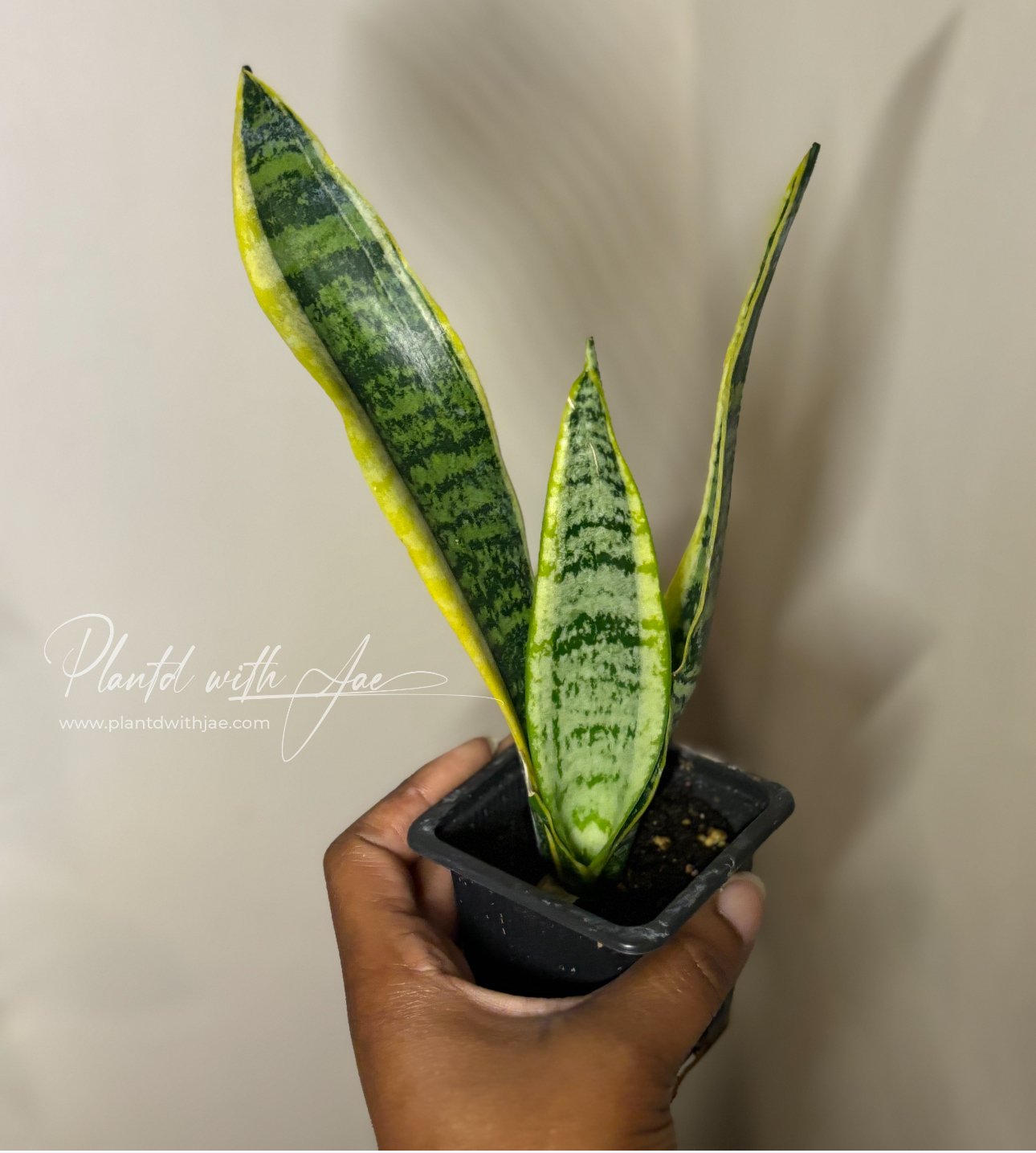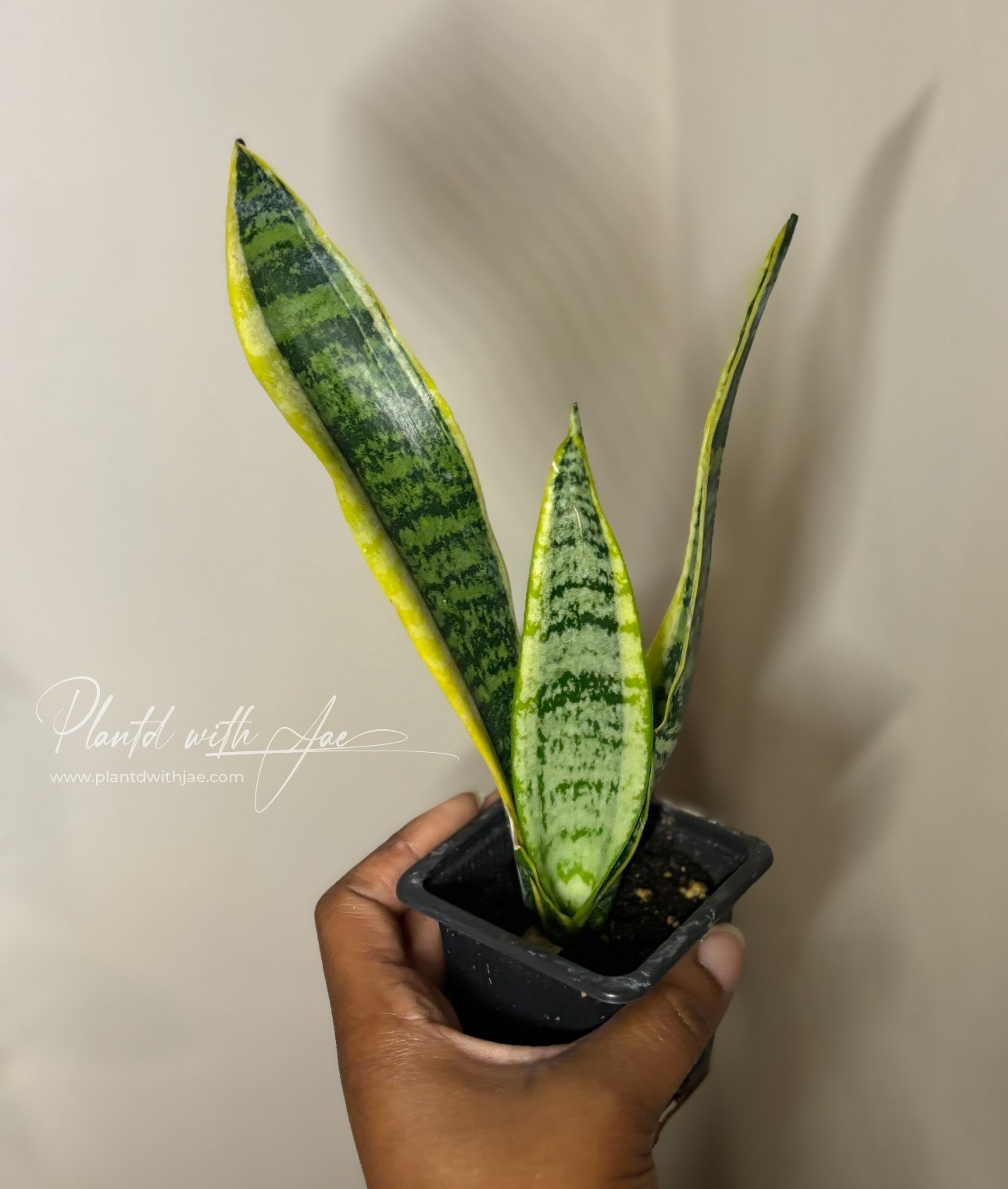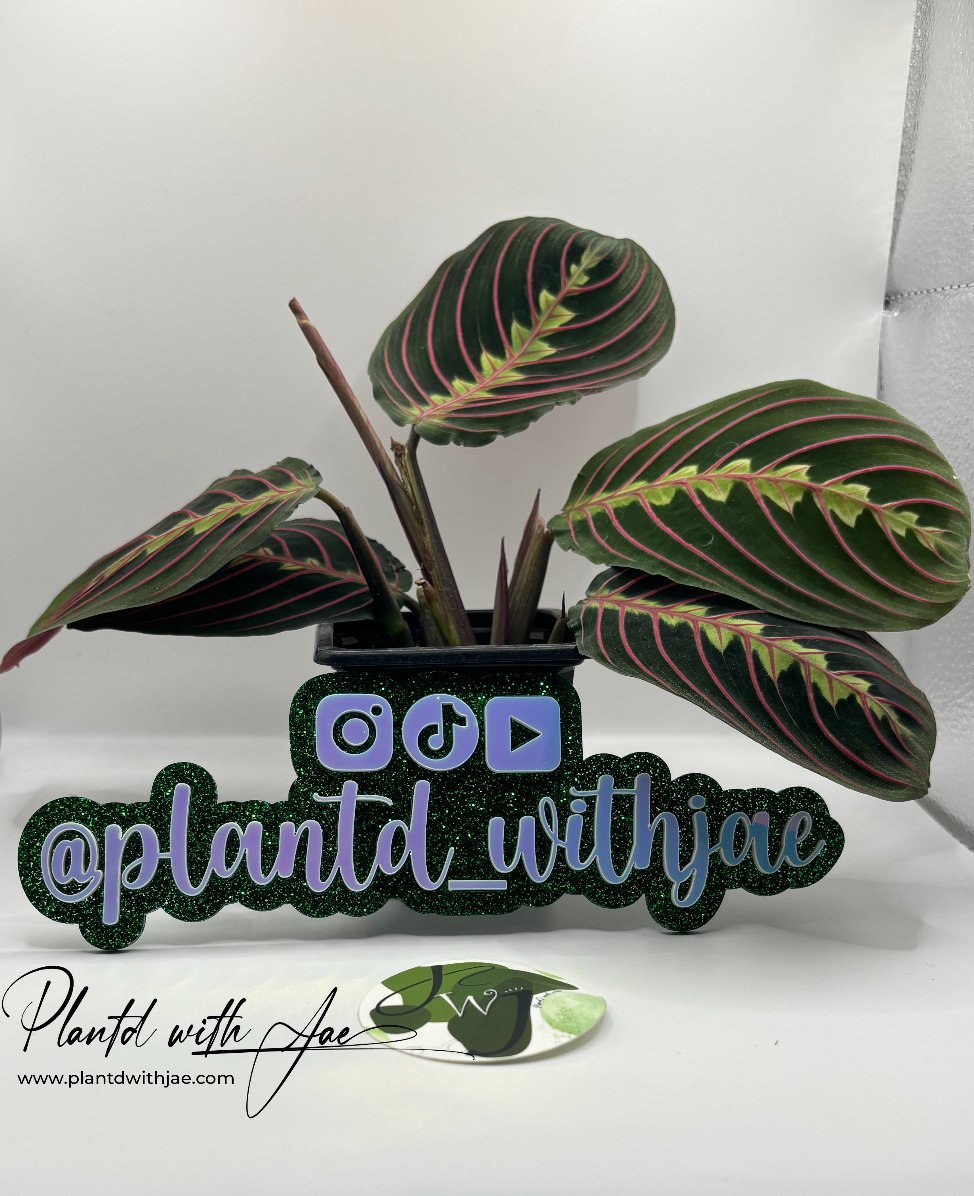
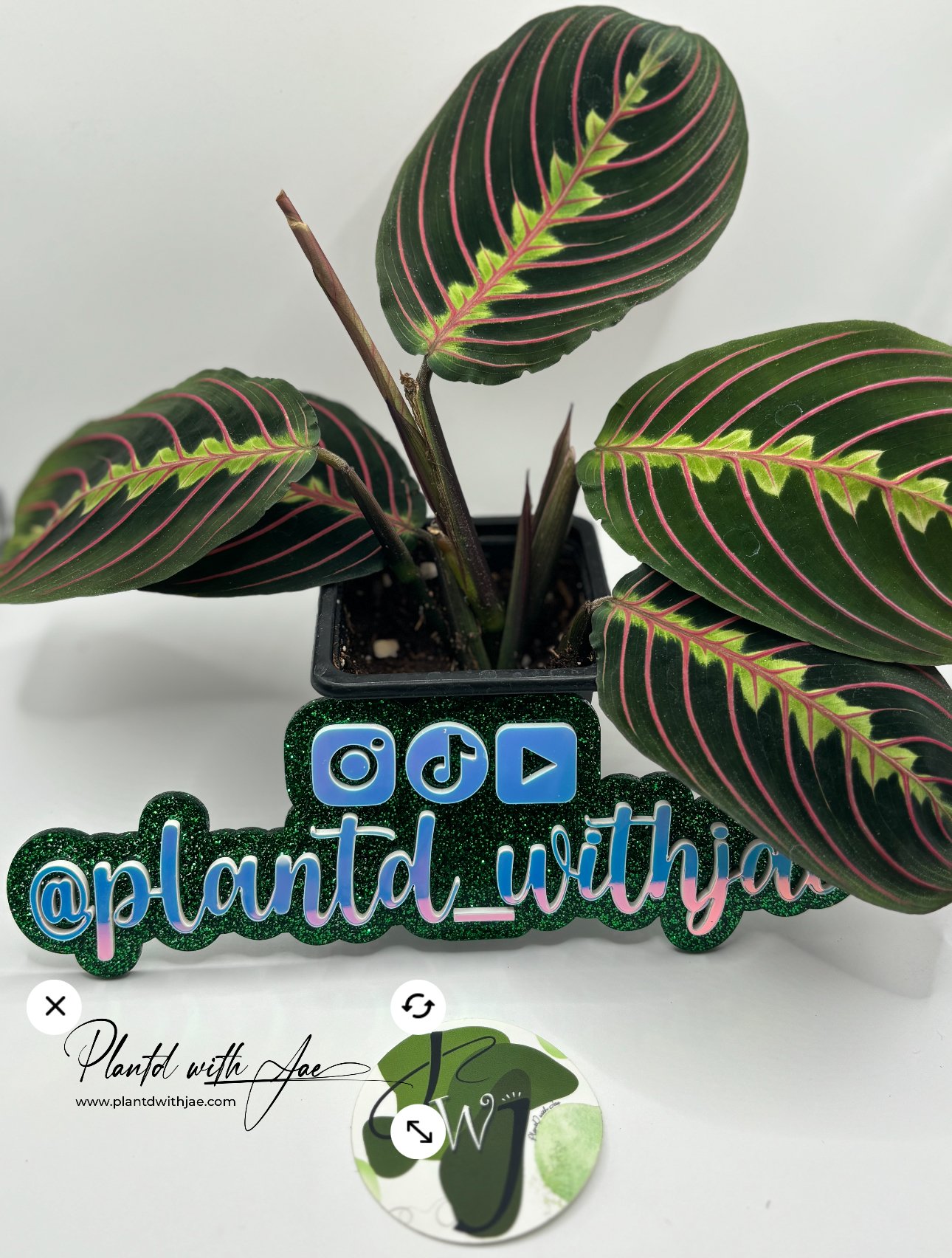
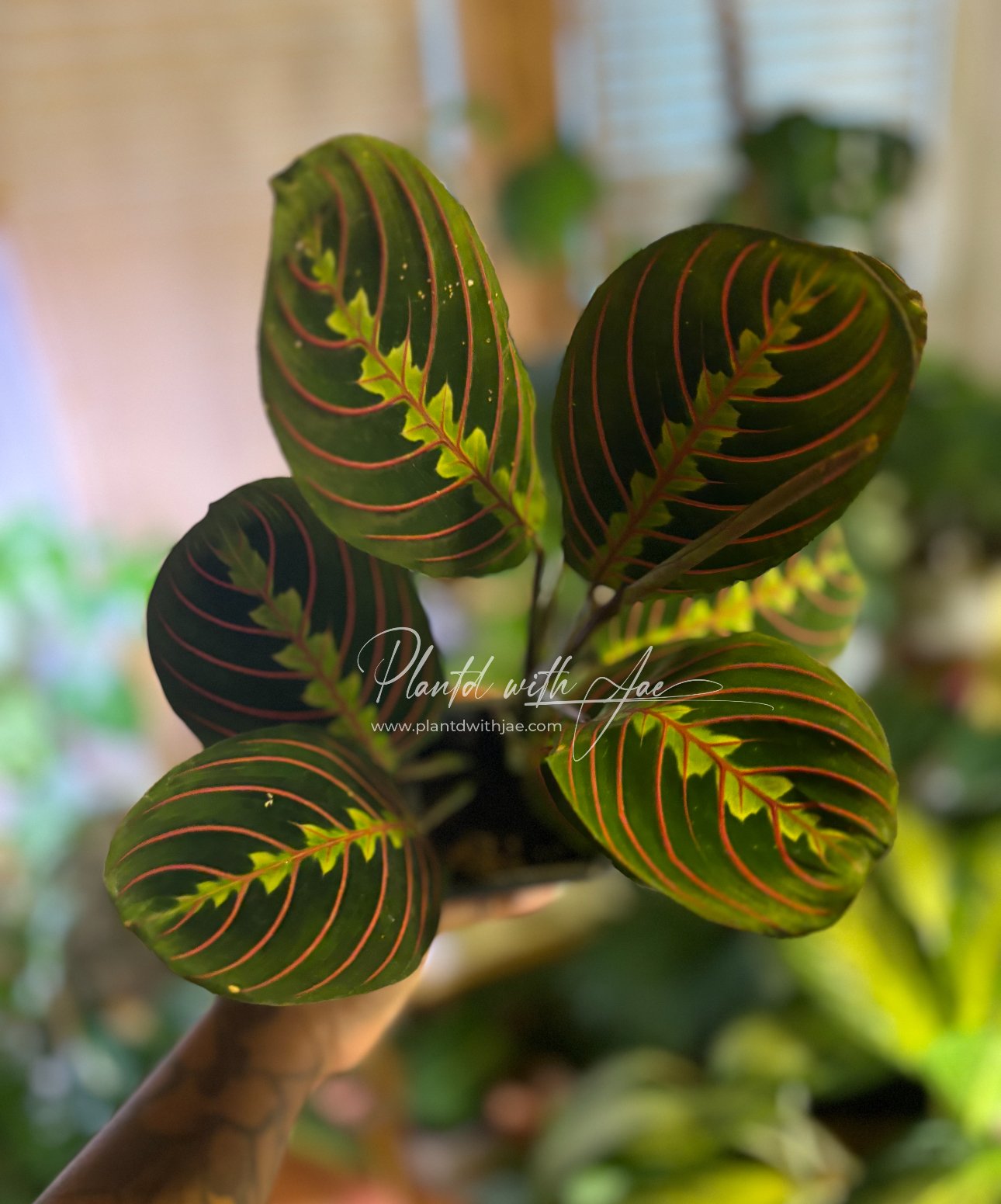
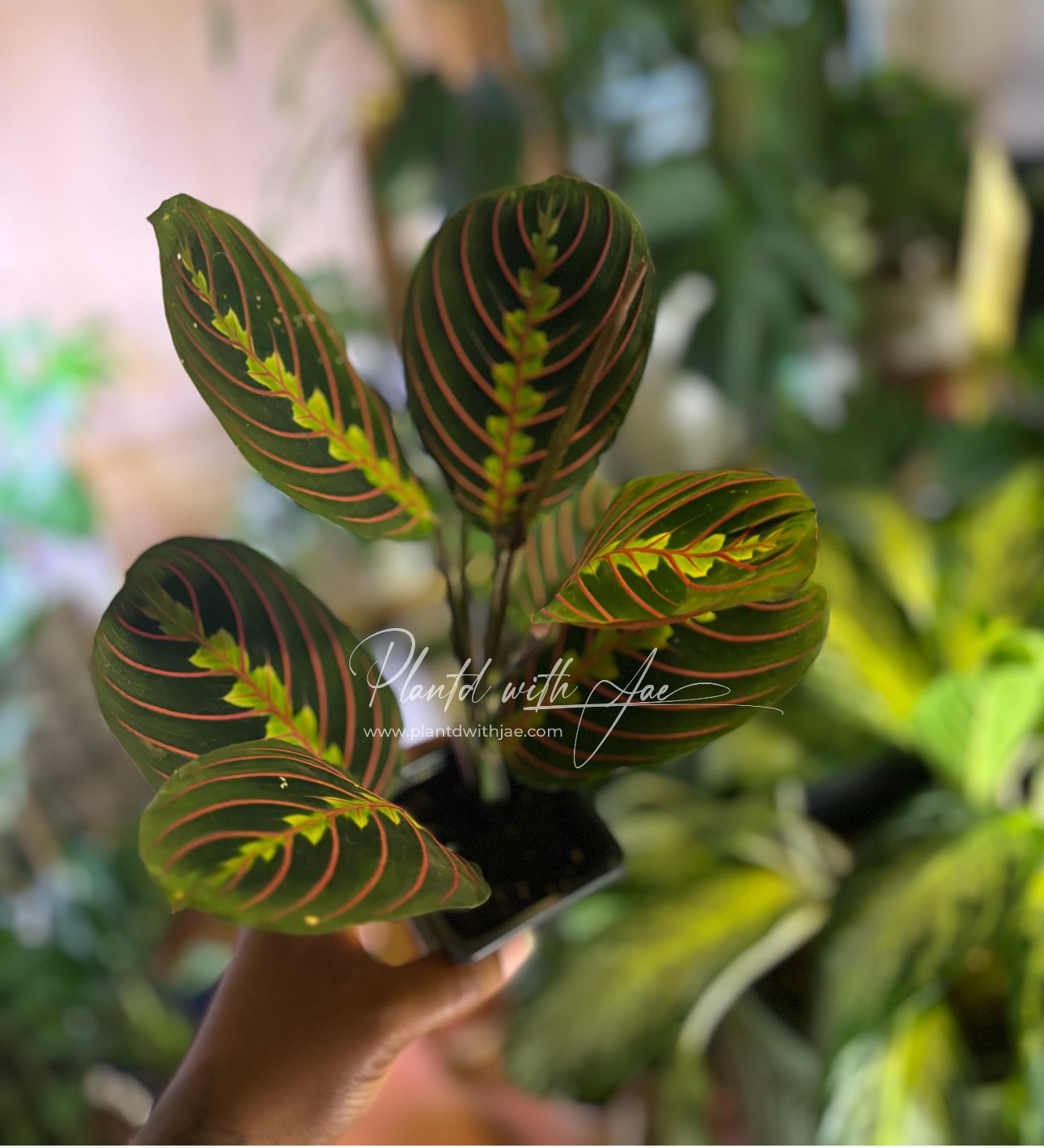

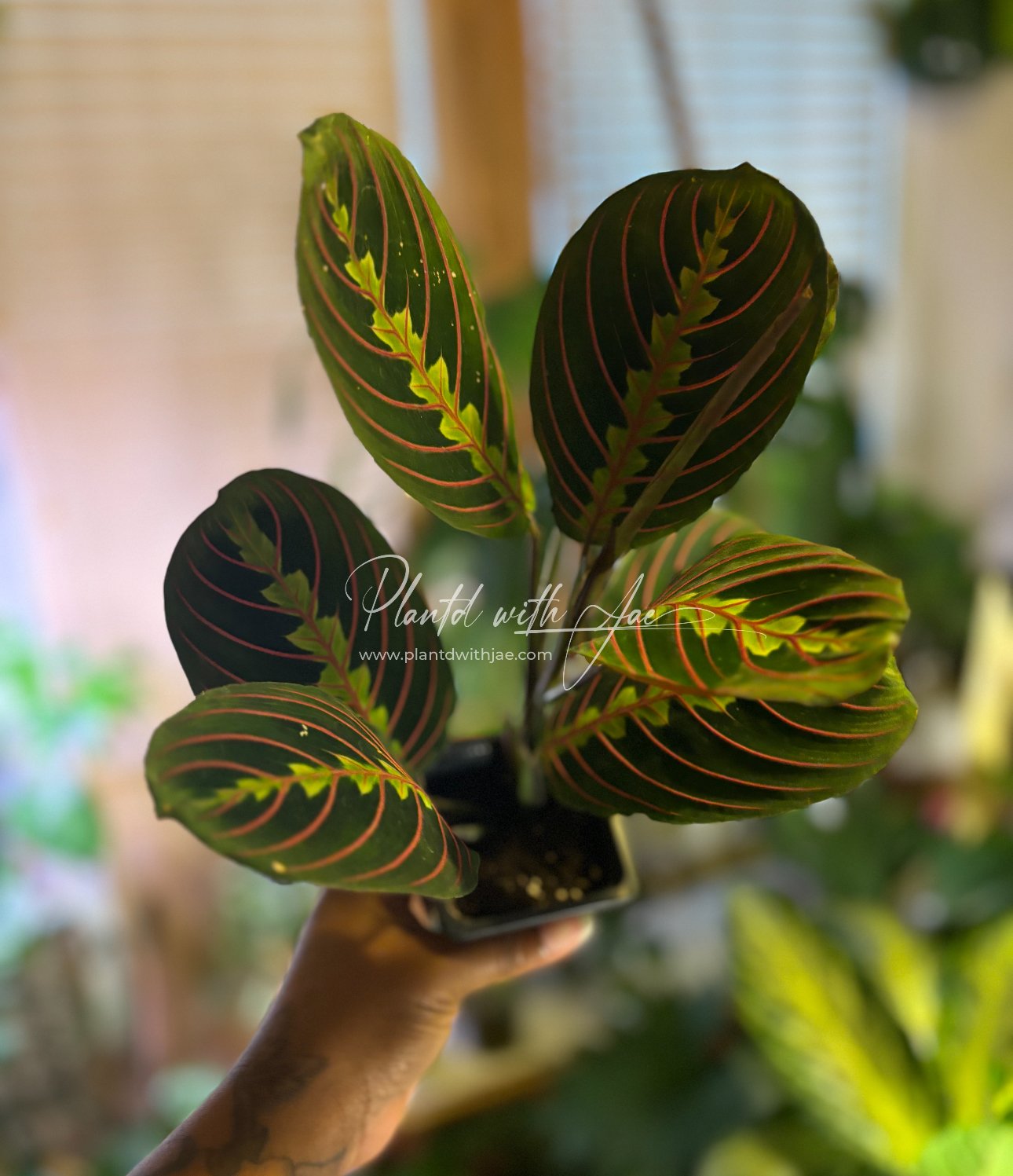

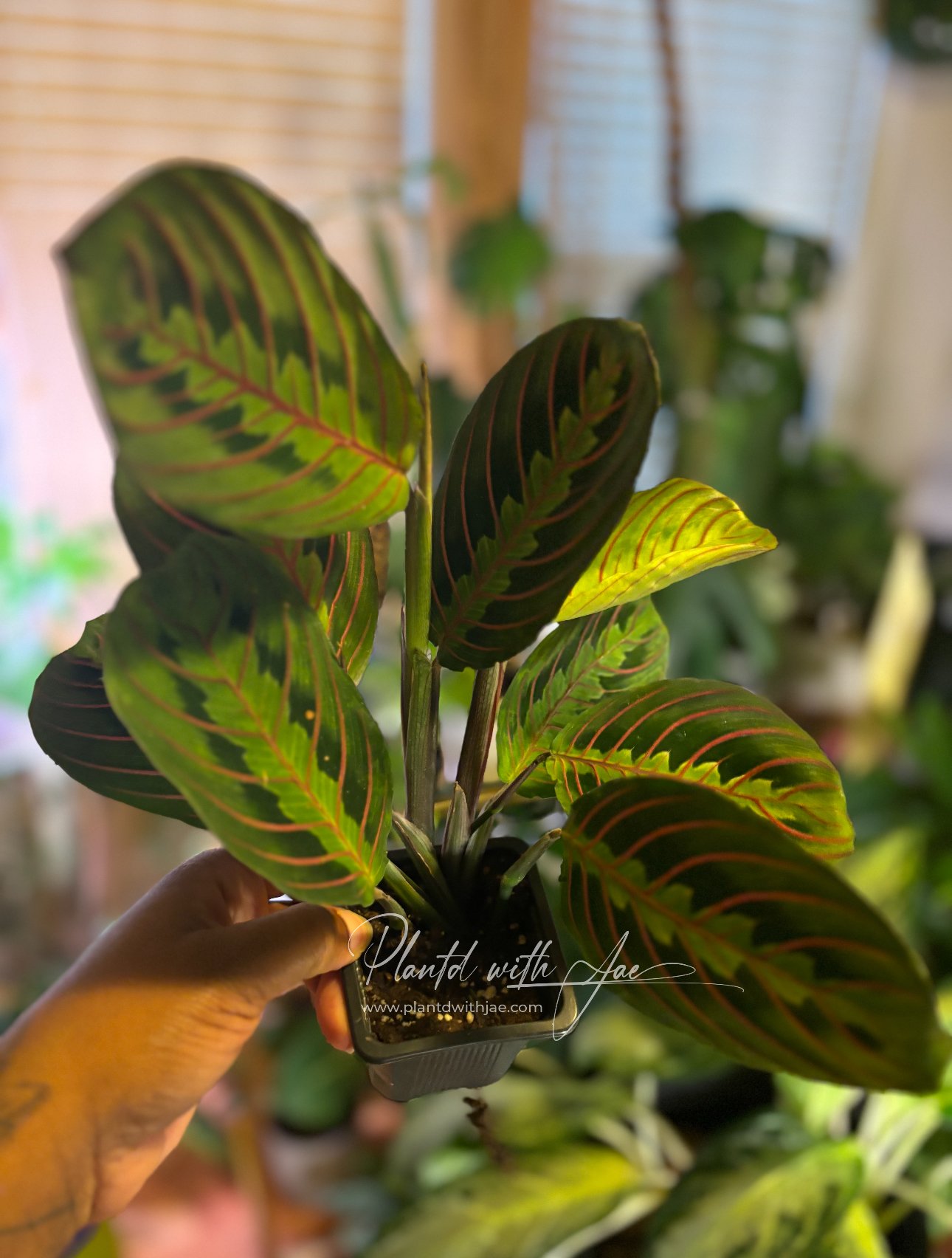
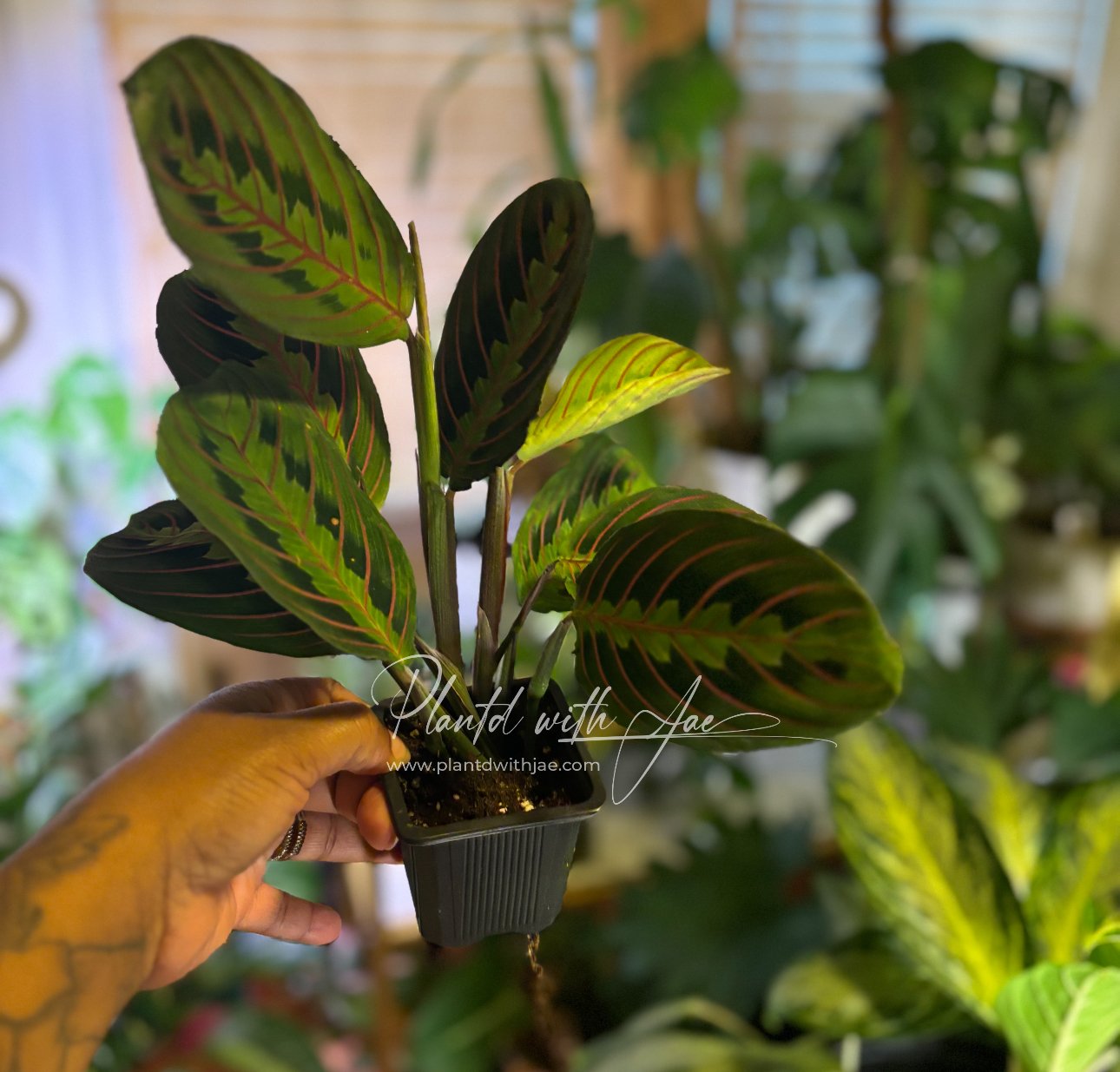
Prayer Plant Red Maranta
3 inch pot
Maranta leuconeura
Don’t overwater. While prayer plants like their soil moist, don’t overwater them. Water during the growing season when the top of the soil becomes dry, and don’t let the soil completely dry out. Overwatering can cause the leaf tips to yellow and fall off, as well as lead to root rot and fungal problems. Additionally, never water with cold water. The water should be room temperature or warmer, but not warmer than 80 degrees Fahrenheit. Tap water usually works just fine.
Fertilize regularly. Every two weeks or so during the growing season (typically late spring to early fall), fertilize your prayer plant with a water-soluble houseplant fertilizer. The plant needs fertilizer only about once a month in the winter. Keep in mind that too much fertilizer can cause brown leaves or even possibly the death of the plant, so you may want to dilute the fertilizer to half strength.
Use the right soil. Regular potting soil usually works just fine for prayer plants, but make sure the pot has drainage holes and the potting mix is airy and well-draining. To make your own ideal soil for a prayer plant, combine peat moss, perlite, loam soil, and coarse sand. Note that too much perlite could result in fluoride burn, which can lead to browning leaves.
Keep the air humid. Outside of its native growing areas and hardiness zones, prayer plants might require a humidifier to keep the indoor growing area moist. An environment that’s too dry can cause brown tips on the leaves. Bathrooms are good spots for prayer plants because they are naturally more humid than the rest of a home.
Know when to re-pot. Repotting is necessary when the roots of the prayer plant start to grow out of the drainage holes in its pot. Additionally, if the plant stops growing or needs constant watering to keep the soil moist, it’s time to repot. However, prayer plants like being somewhat rootbound, so you shouldn’t need to move them often.
Manage sunlight. Prayer plants prefer indirect sunlight as opposed to direct sunlight and thrive in shady but warm areas. Since they are native to rainforests, you should provide the plants with lower light, controlled by either location or some type of cover. However, the leaves won’t fully open during the day if they don’t receive enough light, so don’t place them in completely dark areas, either. If the plant’s leaves fade in color, it’s a sign the plant is receiving too much sun.
Prayer Plant Red Maranta
3 inch pot
Maranta leuconeura
Don’t overwater. While prayer plants like their soil moist, don’t overwater them. Water during the growing season when the top of the soil becomes dry, and don’t let the soil completely dry out. Overwatering can cause the leaf tips to yellow and fall off, as well as lead to root rot and fungal problems. Additionally, never water with cold water. The water should be room temperature or warmer, but not warmer than 80 degrees Fahrenheit. Tap water usually works just fine.
Fertilize regularly. Every two weeks or so during the growing season (typically late spring to early fall), fertilize your prayer plant with a water-soluble houseplant fertilizer. The plant needs fertilizer only about once a month in the winter. Keep in mind that too much fertilizer can cause brown leaves or even possibly the death of the plant, so you may want to dilute the fertilizer to half strength.
Use the right soil. Regular potting soil usually works just fine for prayer plants, but make sure the pot has drainage holes and the potting mix is airy and well-draining. To make your own ideal soil for a prayer plant, combine peat moss, perlite, loam soil, and coarse sand. Note that too much perlite could result in fluoride burn, which can lead to browning leaves.
Keep the air humid. Outside of its native growing areas and hardiness zones, prayer plants might require a humidifier to keep the indoor growing area moist. An environment that’s too dry can cause brown tips on the leaves. Bathrooms are good spots for prayer plants because they are naturally more humid than the rest of a home.
Know when to re-pot. Repotting is necessary when the roots of the prayer plant start to grow out of the drainage holes in its pot. Additionally, if the plant stops growing or needs constant watering to keep the soil moist, it’s time to repot. However, prayer plants like being somewhat rootbound, so you shouldn’t need to move them often.
Manage sunlight. Prayer plants prefer indirect sunlight as opposed to direct sunlight and thrive in shady but warm areas. Since they are native to rainforests, you should provide the plants with lower light, controlled by either location or some type of cover. However, the leaves won’t fully open during the day if they don’t receive enough light, so don’t place them in completely dark areas, either. If the plant’s leaves fade in color, it’s a sign the plant is receiving too much sun.
